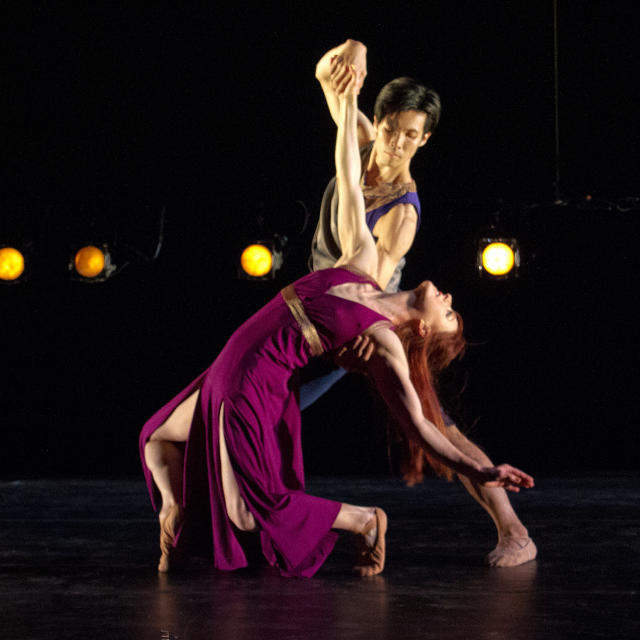These Business Lessons From Ballet’s Leaders Are Totally On Point
Ballet and business both demand exacting performance to succeed. In fact, both a Google executive and NASA’s first black female astronaut credit their career successes, in part, to their dance training. It takes precision, discipline, and countless hours of hard work to succeed as a dancer.
And, as Lucy Bowen McCauley, artistic director and choreographer for Bowen McCauley Dance, points out, “It’s called show business, not show art.” McCauley, who serves on Arlington, Virginia’s Chamber of Commerce board, is also a member of the Arlington Economic Development Commission. Here are some other lessons that make the leap from ballet to business.
Perfect Your Technique
Before they can ever perform on stage, ballet dancers spend hours at the barre perfecting each tiny movement. This is perhaps the best example of applying the 10,000-hour rule—that you need to practice for 10,000 hours before you become truly proficient—an idea popularized by Malcolm Gladwell in his book Outliers.

“A dancer must put in the hours, there are no alternatives,” says Stanford Makishi, vice president for programming at New York City Center. “Even naturally gifted dancers require repetition and work hard in order to make their instrument [body] an expressive and communicative tool.”
Make it Your Own
Going from good to great, an idea popularized by Jim Collins, is often discussed at DanceWorks Chicago, says cofounder Julie Nakagawa. “Going from good to great is a daily journey,” she says. You can’t just settle on performing the dance as it has been done before. You need to use creativity and curiosity to put your own spin on it and find a new way to tell an old story because “if you are just repeating things, you’re not moving the art form forward,” she says.
Doing that requires a willingness to be brave, take risks, and be vulnerable, says Makishi. Little things, such as your gaze and the tilt of your head, are the difference between a good dancer and a great dancer, he says. “You need to be hyperaware of what you’re doing and fine-tune every aspect.”

Recognize That Everyone Plays a Role
One person can’t carry the performance or a business. “It doesn’t work well if one person is trying to do everything,” says Nakagawa. Performances turn out best when everyone is working to their full potential, maximizes the role they play, and has a strong sense of responsibility, she says.
The best leader doesn’t micromanage. They will focus on each team member’s strengths and offer recognition. “Appeal to their strengths and give them responsibility, and they will achieve their goals,” Richard S. Wellins, coauthor of Your First Leadership Job: How Catalyst Leaders Bring Out the Best In Others, told Fast Company in a previous interview.
Never Stop Learning
Earning a degree or being recognized in your field doesn’t mean it’s time to stop learning. Even the best ballet dancers will continue to work on their craft and take a daily class. “You can’t cut out daily practice or it will show up on stage,” says McCauley. Some of the most successful people in business are lifelong learners who are constantly growing, by being open to new ideas and willing to learn from others.

Build Trust
“Whether you’re an executive at a multinational firm or a dancer, you need to trust your partner and others implicitly,” says Meredith “Max” Hodges, executive director of the Boston Ballet. When two dancers perform together in a pas de deux, it requires an immense amount of trust, she says.

“The dance depends on split-second timing, and you’re not able to look back to see if your partner is with you,” says Hodges, who has a Harvard MBA and once worked at Bain and Company. “You have to trust they will be there.” The same is true in business. Employees who feel trusted tend to take more risks, move more quickly, and put more of themselves into their work. They don’t feel the need to hold back and, as a result, creativity flourishes and productivity rises.
Find Your Audience
If you don’t find the right audience for your product, your business won’t succeed. Running a dance troupe is the same. McCauley doesn’t just sit back and hope that an audience comes to performances. She brings dance to the community through a residency program that offers dance classes at local schools, as well as free community performances and a free weekly dance class for people with Parkinson’s disease and their caretakers. McCauley says these strategic partnerships allow her to bring performances to those who think they don’t like dance, or that they can’t afford it, and open their eyes to its benefits.

Seek Feedback
Dancers don’t see feedback as a criticism. “Without question, being a professional dancer means you are getting constant feedback,” Hodges says. “If the teacher offers you feedback, that is a compliment,” she says, “because the teacher thinks you’re worth their time.”
The most successful people are those who are better at handling negative feedback. “Being able to accept feedback requires a modicum of critical self-awareness,” says Mark Murphy, founder of Leadership IQ and author of Hiring for Attitude. As he told Fast Company in a previous interview: “Nobody who’s doing anything worthwhile is going to skate through a situation without feedback.”
Fast Company , Read Full Story
(29)














